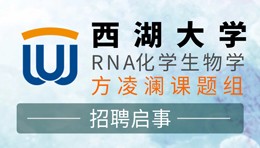当前位置:
X-MOL 学术
›
Case Stud. Therm. Eng.
›
论文详情
Our official English website, www.x-mol.net, welcomes your
feedback! (Note: you will need to create a separate account there.)
Unveiling spatiotemporal temperature distribution at the skin in contact with hot solid surfaces
Case Studies in Thermal Engineering ( IF 6.4 ) Pub Date : 2024-12-09 , DOI: 10.1016/j.csite.2024.105599
Jinu Sudhakaran, Dongchan Lee, Jung Kyung Kim
Case Studies in Thermal Engineering ( IF 6.4 ) Pub Date : 2024-12-09 , DOI: 10.1016/j.csite.2024.105599
Jinu Sudhakaran, Dongchan Lee, Jung Kyung Kim
The significance of understanding the complex temperature patterns and variations on skin during contact with hot solid surfaces has grown recently due to its implications for human safety, comfort, and healthcare. We developed a novel method to visualize the distribution of skin contact temperatures (TSC ), a task that was previously hindered by concealed contact areas. Thermographic images of heated thin solid plates and regression analyses established between measured temperatures from both sides of the plates were used to reconstruct TSC maps. This approach accommodated plates made of indium tin oxide (ITO) glass, copper, and fabric along with porcine skin as a substitute for human skin. Human finger experiments with mildly heated ITO glass were conducted to bridge the gap between laboratory simulations and practical scenarios. Spatiotemporal mapping of TSC unveiled localized hotspots, spatial gradients, and dynamic changes, highlighting the thermal stimulus area as well as the onset, intensity, and duration of pain sensation. The surface temperatures and thermophysical characteristics of both bodies in contact determine these patterns. Fabric's pain onset lagged behind ITO glass and copper. These findings have broad implications from shaping thermal safety protocols to advancing thermal tactile sensing for applications encompassing human–robot interactions, haptics, and electronic skins.
中文翻译:

揭示与热固体表面接触的皮肤的时空温度分布
由于它对人类安全、舒适和医疗保健的影响,了解与热固体表面接触时皮肤上的复杂温度模式和变化的重要性最近越来越大。我们开发了一种新方法来可视化皮肤接触温度 (TSC) 的分布,这项任务以前受到隐藏接触区域的阻碍。加热的薄固体板的热成像图像和在板两侧的测量温度之间建立的回归分析用于重建 TSC 图。这种方法可容纳由氧化铟锡 (ITO) 玻璃、铜和织物制成的板以及猪皮作为人体皮肤的替代品。使用温和加热的 ITO 玻璃进行了人体手指实验,以弥合实验室模拟和实际场景之间的差距。TSC 的时空映射揭示了局部热点、空间梯度和动态变化,突出了热刺激区域以及疼痛感的发作、强度和持续时间。接触的两个物体的表面温度和热物理特性决定了这些模式。织物的疼痛发作落后于 ITO 玻璃和铜。这些发现具有广泛的意义,从制定热安全协议到推进热触觉传感,适用于包括人机交互、触觉和电子皮肤在内的应用。
更新日期:2024-12-09
中文翻译:

揭示与热固体表面接触的皮肤的时空温度分布
由于它对人类安全、舒适和医疗保健的影响,了解与热固体表面接触时皮肤上的复杂温度模式和变化的重要性最近越来越大。我们开发了一种新方法来可视化皮肤接触温度 (TSC) 的分布,这项任务以前受到隐藏接触区域的阻碍。加热的薄固体板的热成像图像和在板两侧的测量温度之间建立的回归分析用于重建 TSC 图。这种方法可容纳由氧化铟锡 (ITO) 玻璃、铜和织物制成的板以及猪皮作为人体皮肤的替代品。使用温和加热的 ITO 玻璃进行了人体手指实验,以弥合实验室模拟和实际场景之间的差距。TSC 的时空映射揭示了局部热点、空间梯度和动态变化,突出了热刺激区域以及疼痛感的发作、强度和持续时间。接触的两个物体的表面温度和热物理特性决定了这些模式。织物的疼痛发作落后于 ITO 玻璃和铜。这些发现具有广泛的意义,从制定热安全协议到推进热触觉传感,适用于包括人机交互、触觉和电子皮肤在内的应用。































 京公网安备 11010802027423号
京公网安备 11010802027423号